Spend The Night Camping in These Expert-Recommended Ultralight Tents
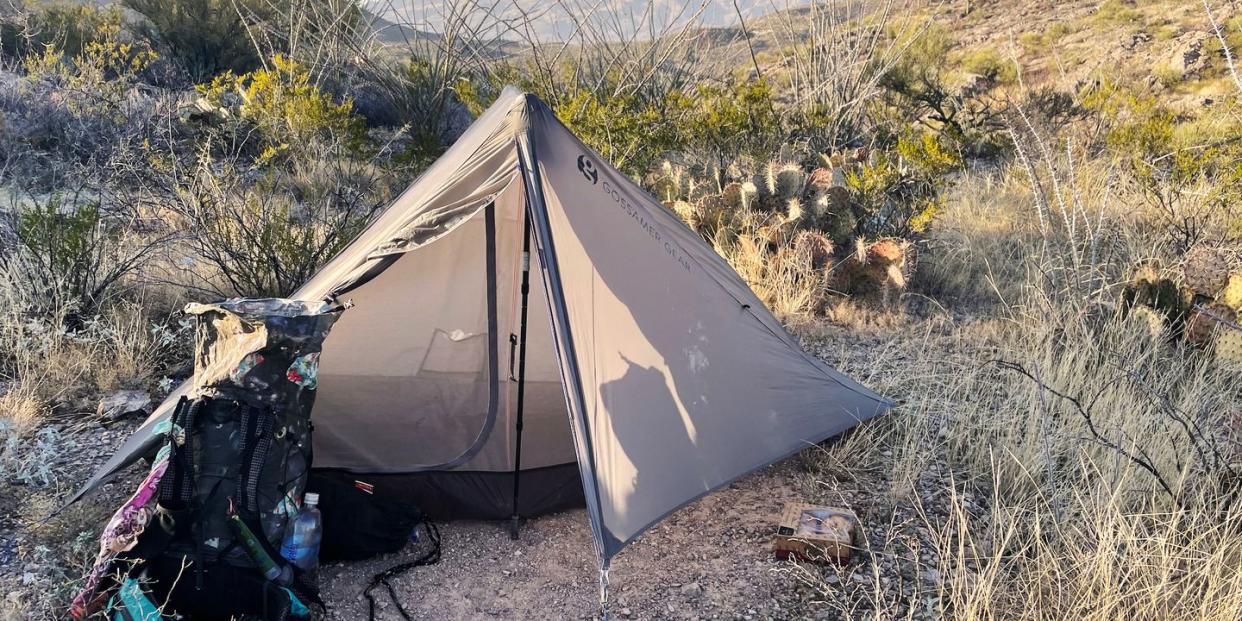
"Hearst Magazines and Yahoo may earn commission or revenue on some items through these links."
Choosing the right lightweight tent can be the difference between a comfortable base weight and an uncomfortably heavy pack. A lightweight tent should weigh no more than 3.5 lbs. for a two-person tent, and ideally no more than 2 lbs for a one-person tent. Look for a user-friendly pitch system (whether you’re using a trekking-pole shelter or a freestanding double-wall tent) and enough head and shoulder room to comfortably sit up and change.
Consider condensation, how much space the tent takes up at a site, and whether you want two doors for your two-person shelter. With those credentials in mind, here are our picks for the best lightweight tents on the market.
Best Ultralight Tents
The Expert: I have backpacked thousands of miles and spent many months sleeping in tents. I have thru-hiked the Appalachian Trail, Colorado Trail, and Ouachita Trail, and I’m currently checking off sections of the Oregon Coast Trail and the Arizona Trail.
I’m also set to embark on a 2,700-mile bike tour this summer. All of these miles (and months) sleeping outdoors means I’ve spent a lot of time in tents—both overnight and during the day waiting out storms—and I have plenty of tried-and-true options to pick from.
How to Choose an Ultralight Tent
There are plenty of ultralight tent options on the market, but you can narrow down the options by choosing your preferred tent capacity, style, and considering the livable space and vestibule area.
What capacity tent do you need?
Lightweight tents typically come in one, two, or three-person capacities. If you’re buying one tent to do it all, we recommend a two-person tent. Many models are light enough to carry as a solo hiker, but it gives you the option of camping comfortably with a partner should the opportunity arise. Plus, a two-person tent allows space to spread your gear inside the tent and not feel cramped against the walls.
Do you prefer a trekking-pole style or freestanding?
Many hikers start out with a freestanding (or semi-freestanding) tent for easier pitch and more flexibility with site choice—it’s easier to pitch a freestanding tent on sandy or rocky ground. However, trekking pole shelters are often lighter, and once you get the hang of the pitch, they are also quick to set up, though many of these single-wall shelters collect more condensation.
If you are looking to shed ounces, go for a trekking-pole shelter. If you want a double-wall shelter with an easier pitch and don’t mind a bit more weight, go for a freestanding tent.
How much livable space does the tent have?
For two-person tents, we look for at least 27 square feet of interior space, and most people prefer two doors and two vestibules. For one-person shelters, look for at least 16 square feet of interior space and a 7-foot vestibule. A peak height of at least 38-40 inches will feel comfortable for most hikers.
How We Selected
These tents are all top-of-the-line lightweight shelters from legacy brands with a dedicated history of building gear for weight-conscious hikers and backpackers. These shelters are all lightweight, durable, and packed with features like large vestibules, single-hub poles, easy pitching, and internal storage to make them streamlined and comfortable for nights on the trail or at a campsite.
I have tested most of these myself, and the ones I haven’t owned or tested are vetted by my outdoor-industry colleagues and the thru-hiker community. I looked for a range of styles—from entirely freestanding to trekking-pole supported—as well as one-person and two-person models that hit the sweet spot between weight, durability, and livable space.
We did consider the backpacker favorite Big Agnes Fly Creek UL, which is a great tent, but the front-facing door (and single door for the two-person) ultimately didn’t make the cut in favor of the brand’s Tiger Wall and Copper Spur.
We also considered REI’s trekking-pole shelter, the Flash Air I, but the price has gone up, and at 2.5 pounds for a one-person trekking-pole shelter, it didn’t have the specs we needed for price, space, and weight.
Tiger Wall UL 2
The Tiger Wall has been my go-to tent for my backpacking trips where I want extra space and don’t mind carrying a few ounces more than my trekking-pole shelter. This really is a do-everything tent, with two doors and vestibules for convenient entry and exit, and a design that maximizes shoulder and headspace with a single-hub pole system to increase livable space without excess weight.
I carry this tent on my own when I want more space for my gear, but it also fits two people easily. The steeper pitched walls contribute to the shoulder space, and the structured foot space and extended bathtub floor help keep the damp walls away from your sleeping bag. You do need to stake the foot area for structure, so this tent isn’t entirely freestanding—something to be aware of with unpredictable ground.
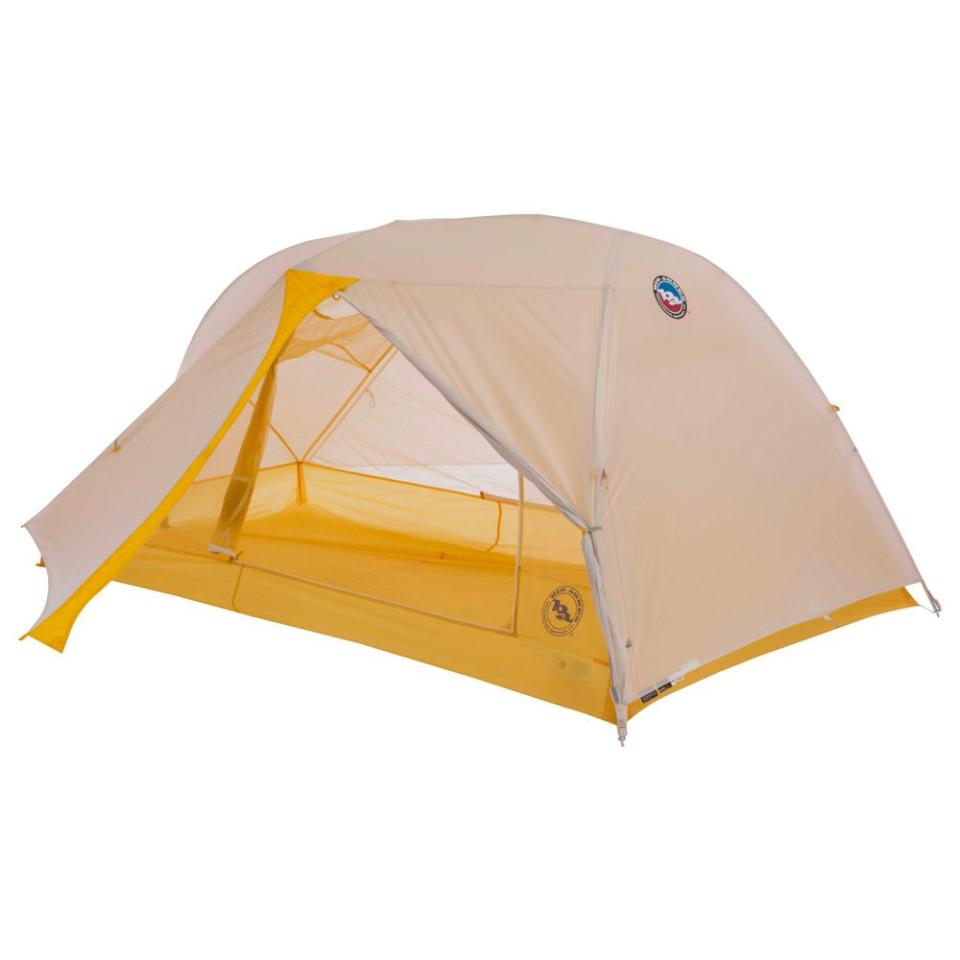
Tiger Wall UL 2
$449.95
rei.com
Rainbow
The Tarptent Rainbow is a reasonably priced, versatile shelter favored by solo hikers accompanied by dogs, or hikers who usually travel solo but might have a companion for part of the trip. The 24 sq. ft. interior space and large vestibule allow room for a dog or extra space to spread out with gear.
This tent sets up fly first, which hikers will find useful in crummy weather, though the pole setup and pitch is a bit trickier to get right than other pole-supported shelters. You have to thread the poles through the silnylon sleeve to create the main structure, but it does have extra shoulder room from a horizontal spreader bar. This shelter can also be supported with trekking poles if you don’t want to carry the pole set.
We’ve listed the one-person model here, but the Rainbow line includes the popular Double Rainbow, the company’s two-person model that weighs 2.6 lbs. Keep in mind these tents don’t come seam-sealed, but you can buy a seam-sealing kit or pay a small fee for the company to seam-seal for you.
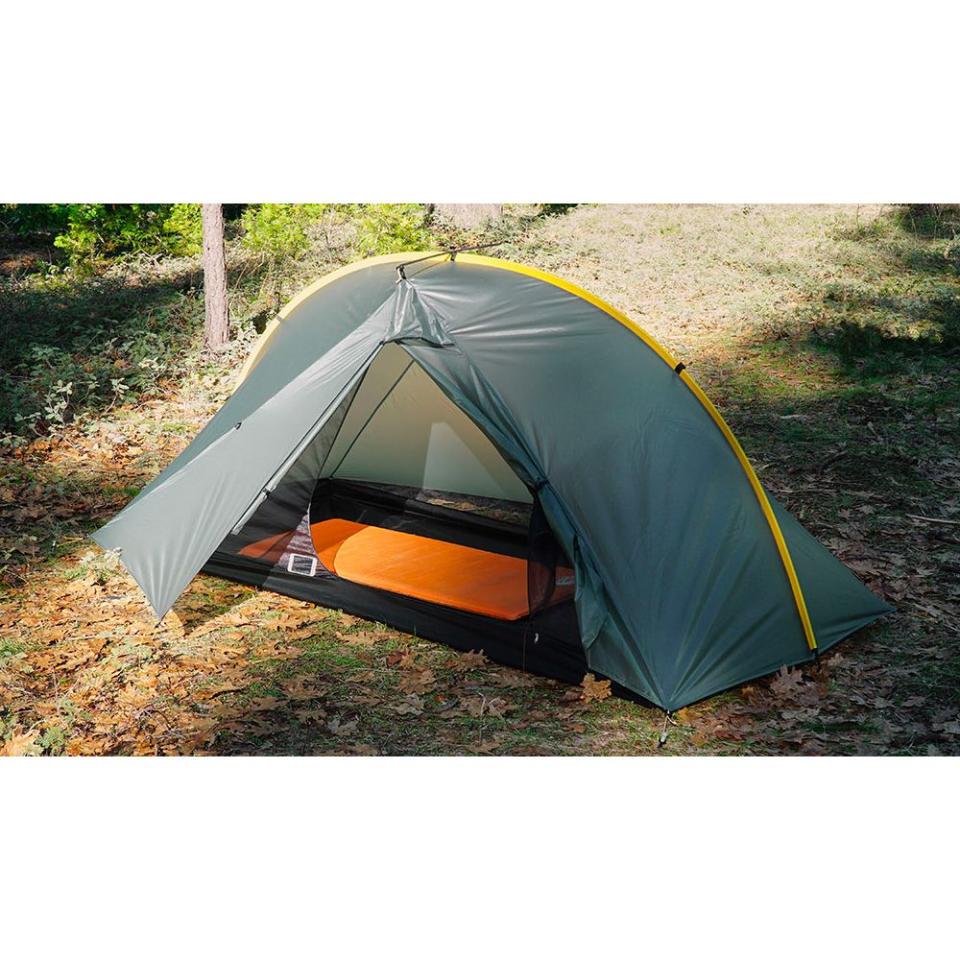
Rainbow
$279.00
tarptent.com
Lunar Duo
This trekking-pole tent from smaller manufacturer Six Moon Designs regularly lands on industry best-of lists thanks to its combination of space, weight, durability, and reasonable (for the industry) price point. While trekking-pole shelters take some practice to set up, this model is quite forgiving, and you don’t need a perfect pitch to get the ideal tension and living space.
While it’s somewhat heavier than other trekking-pole models with a similar footprint, we’re continually impressed with the durability, and the living space is more than enough for two people plus gear. The whopping 34 square feet of interior space makes this perfect for hikers with dogs, or taller hikers who need more head and foot room.
This tent was also designed with bad weather in mind—you can re-tension the guylines from inside the tent, something you might not think about until you wake up to a raging storm and don’t have to exit the shelter to tighten the walls. The ventilation is also better thanks to the large vestibules that fully open, similar to a double-walled freestanding model.

Lunar Duo
$395.00
sixmoondesigns.com
Free Duo
While many tents advertise as freestanding, most of them do need at least a few stakes for structure. Not the Free Duo though—the whole shelter sets up sans stakes thanks to the H-pole system, and the dual vestibules can be tied down to the zipper to prevent flapping in truly unstakeable ground like rocks or the beach.
The carbon-fiber H-poles are two separate pole systems that anchor the four corners of the tent and create the tension for the roof structure. I had never seen poles like this, but once I figured it out, I could pitch this tent in under a minute.
The tent body is made with Dyneema Composite Fabric (DCF), a darling of the ultralight community. This lightweight material is strong, abrasion resistant, and fully waterproof. This is a single-wall tent, which means you’re more prone to condensation than with double-walled structures, but the surface of the DCF wipes down easily with a small towel or microfiber cloth and shakes dry as well.
The DCF also doesn’t sag, which comes in handy during rainy trips. I’ve found the interior to get warm in sunlight, as it’s more translucent than nylon tent bodies, but otherwise, this is a strong, lightweight, and incredibly convenient tent for trips where the ground staking is questionable.
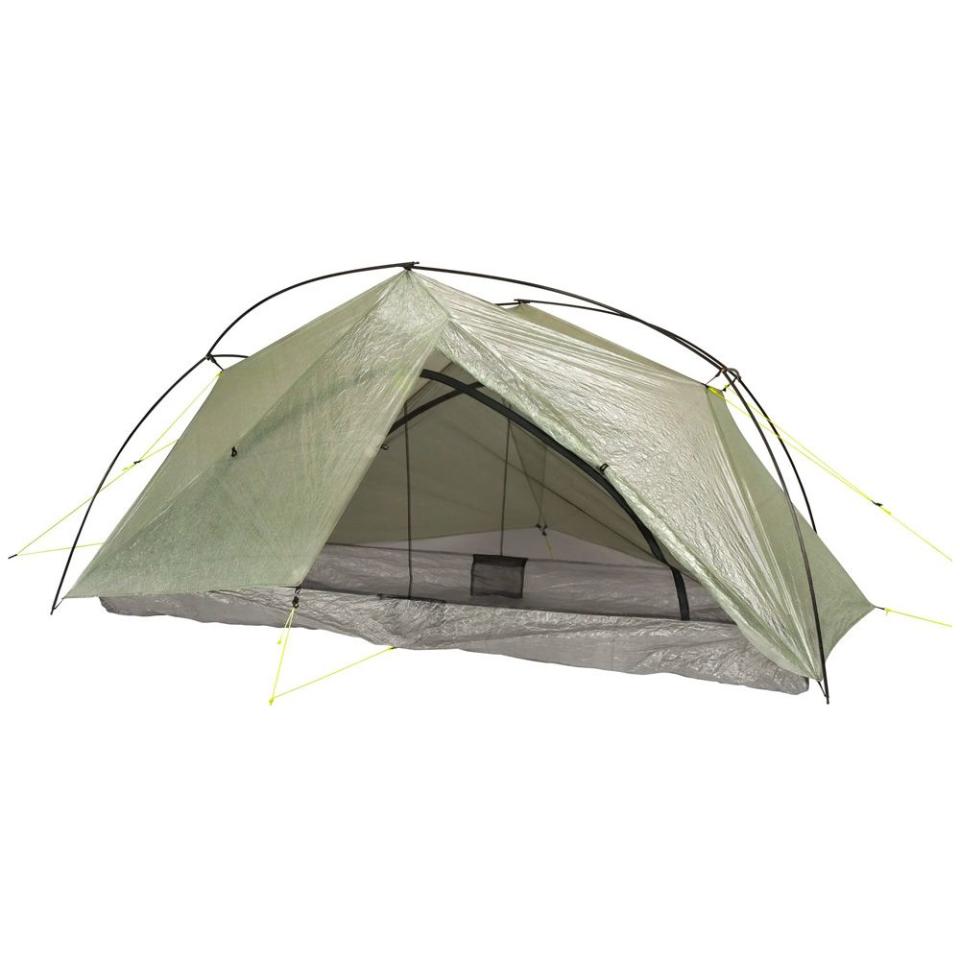
Free Duo
$849.00
zpacks.com
Hornet OSMO Ultralight 2P
NEMO’s recently updated, proprietary tent fly fabric is called OSMO, a ripstop polyester / nylon with incredible waterproofing. We don’t often see a poly / nylon blend in tent or fly bodies, but this combination offers the best of both worlds as far as waterproofing, durability, stretch, and weight goes.
It’s also coated with a polyurethane layer for additional weather resistance, and the special blend of materials helps prevent the fly from sagging in torrential or prolonged downpours. NEMO says this tent has “three times less stretch” than some of their other models, and while we haven’t gone out to measure a direct comparison in a rainstorm, that’s a pretty significant claim.
This tent is slightly smaller than other two-person tents on this list, but comes in at a reasonable weight for a double-walled shelter, and has the two doors / two vestibules we love to see in a two-person shelter. You can increase the foot area with the extra guylines, protecting your sleeping bag from damp walls and providing even more tension in the tent body for nasty weather.
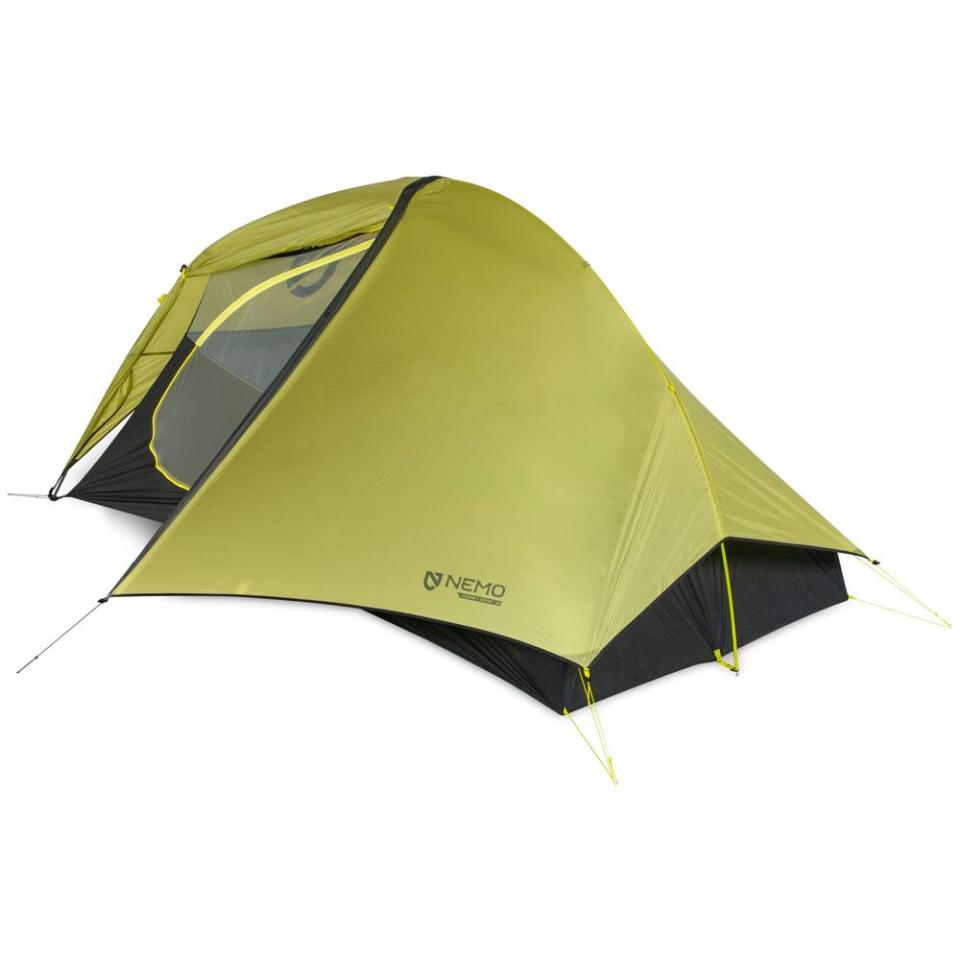
Hornet OSMO Ultralight 2P
$429.95
rei.com
The One
Gossamer Gear’s flagship trekking-pole tent was what convinced me to finally add this style of shelter to my backpacking options. Until I tested this for review, I was solely a double-wall, freestanding tent user. It took me a few tries to get the tension, stake angle, and pitch correct, but once you figure out the order of operations, it pitches quickly and is easy to tension for storm-proofing and maximum interior space.
This tent feels quite spacious for one person, and I’ve shared it with another hiker in a pinch without feeling crammed. It has a 10 sq. ft. vestibule for stashing gear out of the elements, and a tall bathtub floor that keeps mud and sand away from the interior. The trick to pitching this tent is lightly staking the corners, then telescoping your trekking poles into the reinforced ports and finally shifting the stake placement until you get the correct angle for the tent walls. Unlike double-wall tents, this trekking-pole supported structure can be pitched in a storm without getting the inside wet, and the whole thing packs down to the size of a Nalgene and weighs barely over one pound.
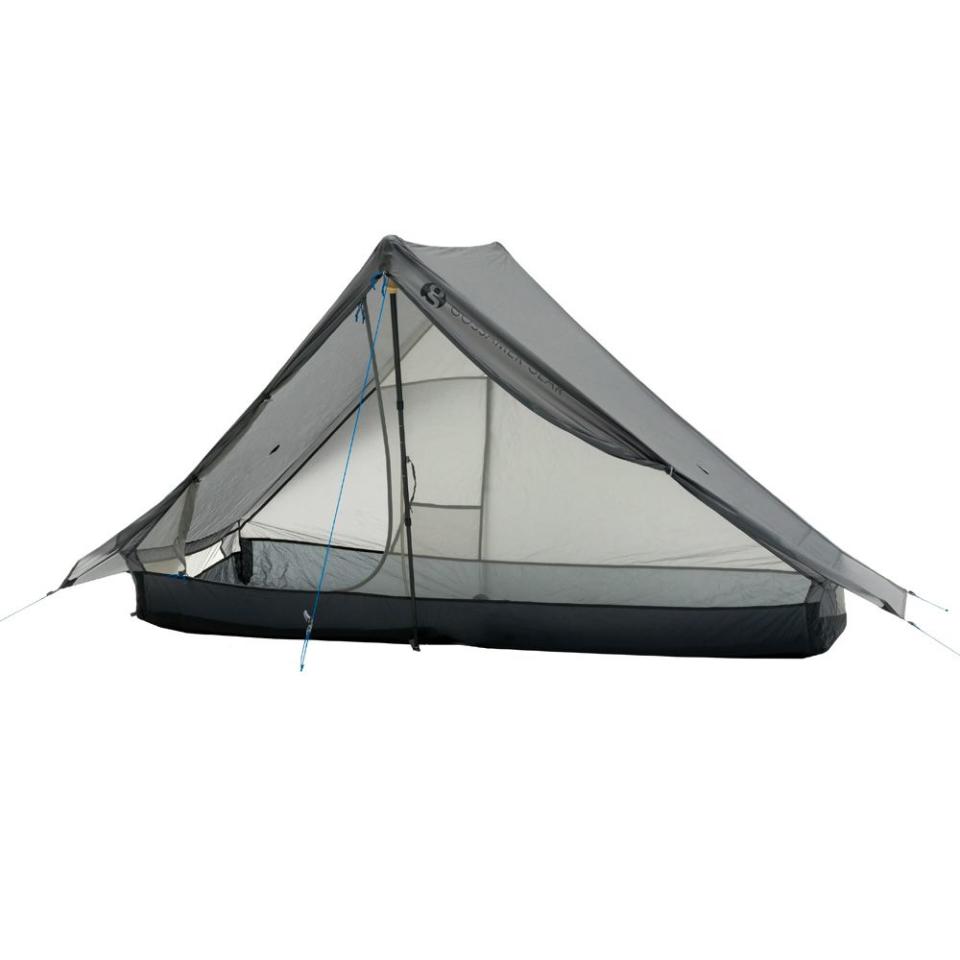
The One
$410.00
gossamergear.com
Copper Spur HV UL 2
Big Agnes holds a solid corner of the double-wall tent market with its lightweight, spacious, easy-to-pitch tents. The Copper Spur is on the larger end of their two-person lineup, with 29 square feet of interior space and two large vestibules. While the interior space is similar to others on this list, the generous horizontal spreader bar increases head and shoulder room, making this tent feel larger than it is.
The tent pitches in just a few minutes, with color-coded buckles that ensure you throw the fly on the correct way the first time. More recent updates to the original include a versatile fly door that can be pitched like an awning, and larger interior storage for small gear items.
Taller hikers will appreciate the peak height of 40 inches, and the steep walls make it easier to sit up and get changed without throwing elbows into your camping partner. This is my go-to tent for two hikers when I want more shoulder room and don’t mind the extra few ounces over the Tiger Wall.
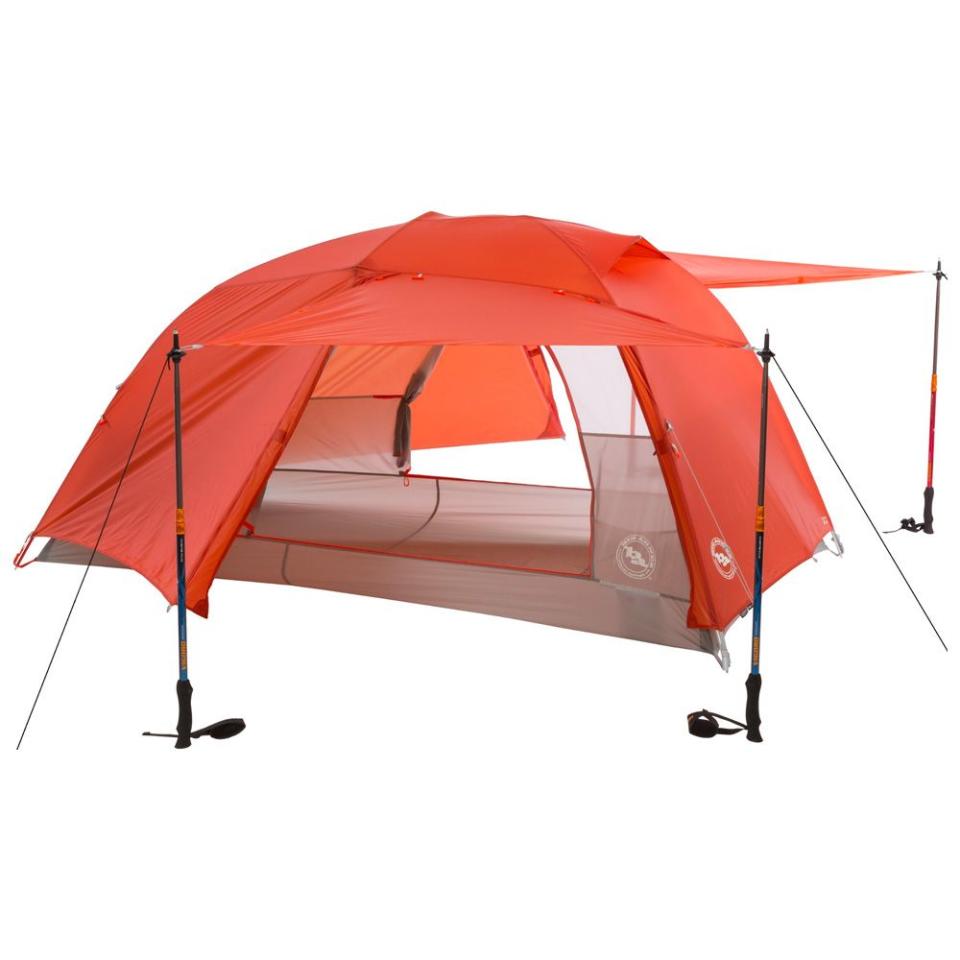
Copper Spur HV UL 2
$449.95
rei.com
Access 2
Four-season tents can be a tricky category for finding the perfect option—to get protection from the elements, the structural integrity to withstand a snow load, and the pitch to shed snow, you’re going to lose some of the specs we look for in a three-season tent. But for the protection level, space, and (relatively) low weight, the MSR Access 2 is an excellent choice.
This tent has been in the MSR lineup since I tested an older version in 2016, proving its worth in design and appeal. Four-season tents need to have a stronger pitch, heavier materials, and a roof design that can withstand a snow load without collapsing, but they also need to shed snow so it doesn’t build up.
This tent was designed specifically for that, with a stable central pole hub and winter-ready Easton Syclone poles that are stronger and more flexible in cold weather. It has two vestibules that are each nearly 9 square feet, along with 29 square feet of interior space.
There is less mesh on this tent than on three-season tents, a necessary trade-off for more warmth and protection from the elements. Roofline vents do help reduce condensation, and it has small mesh windows to increase airflow.
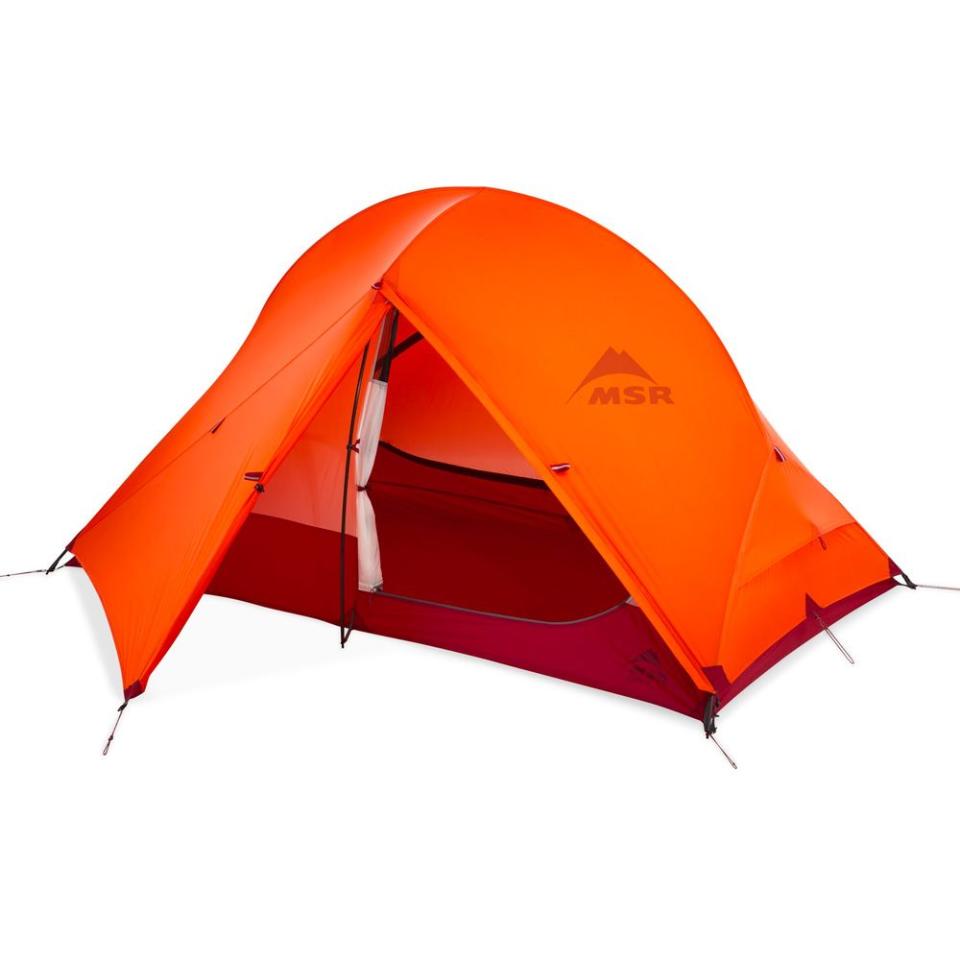
Access 2
$799.95
rei.com
Q+A
PM: Would you rather stay in a smaller one-person tent or carry the weight of a two-person tent?
MS: It depends on the trip. On trips where I’ll be hiking a lot of miles each day and want to keep my pack weight low, I’ll carry a one-person trekking-pole shelter to save weight on double-wall build and extra poles. For shorter trips or base-camping trips, I love the extra space of a two-person freestanding tent to organize my gear and spread out.
PM: How much does the two-door-two-vestibule design matter in a two-person tent?
MS: When I’m backpacking or traveling with a partner for a long period of time, two doors and two vestibules is pretty nonnegotiable. Having two doors doesn’t just make late-night bathroom breaks less annoying, it allows each person to stash their gear in their own vestibule, and keeps the tent interior more organized. Plus, who wants to be crawling all over the other person to get in and out of the tent?
PM: What are your go-to tents for long trips?
MS: For extended trips or thru-hikes, I carry The One from Gossamer Gear. It’s fast to set up and has plenty of space to spread my gear out. For long trips with a partner, I take the Big Agnes Tiger Wall 2. It’s very lightweight when split between two people, and the two doors and two vestibules make life easier on the trail.
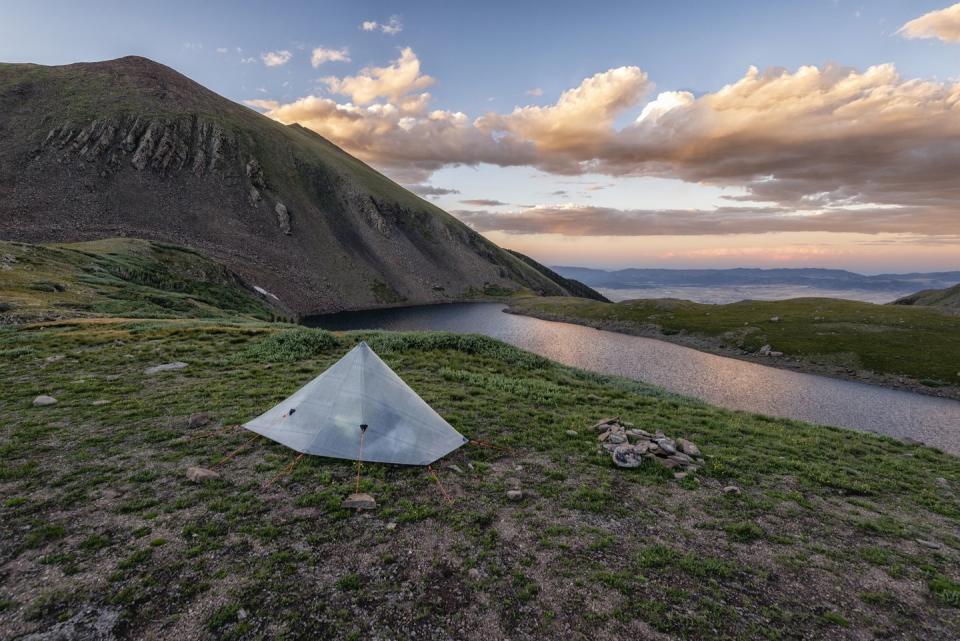
You Might Also Like

